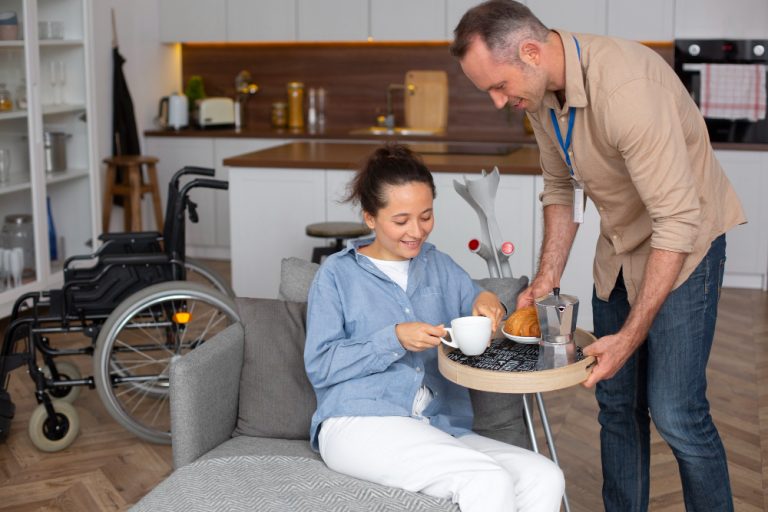In-home support services
In-home support services for aged and disabled people aim to provide assistance and care within the comfort of their own homes. These services are designed to enhance the quality of life for individuals who may require additional support due to aging, physical disabilities, or chronic illnesses. The specific details of in-home support services can vary based on individual needs, but here are some common elements:
Personal Care: In-home support services often involve personal care assistance, which includes tasks such as bathing, grooming, dressing, and toileting. Caregivers can provide hands-on support, ensuring the individual’s personal hygiene and well-being are maintained.
Medication Management: Many aged and disabled individuals require assistance with medication management. In-home support services can include reminders to take medications, organizing pillboxes, and even administering medications as per the prescribed schedule.
Meal Preparation: Nutrition is crucial for overall health, and in-home support services can include meal planning and preparation. Caregivers can ensure that nutritious and balanced meals are prepared according to dietary requirements or restrictions.
Household Chores: Assistance with light household chores can be part of the in-home support services. This may involve tasks such as cleaning, laundry, dishwashing, and maintaining a safe living environment.
Companionship: Social interaction and companionship play a vital role in maintaining mental and emotional well-being. Caregivers can provide companionship by engaging in conversations, playing games, reading, or accompanying the individual on outings and appointments.
Transportation: In-home support services may include transportation assistance to help individuals attend medical appointments, run errands, or participate in social activities. This can involve using the caregiver’s vehicle or arranging for suitable transportation options.
Mobility Assistance: For individuals with limited mobility, caregivers can offer support with mobility aids, transfers, and positioning. They can help with walking, transferring from bed to chair, or using mobility devices like wheelchairs or walkers.
Respite Care: In-home support services can also provide respite care, giving family caregivers a temporary break from their responsibilities. This allows family members to recharge, attend to personal matters, or take time for self-care while knowing their loved ones are being cared for.
Home Safety Evaluation: Caregivers may conduct home safety evaluations to identify potential hazards or modifications needed to enhance the safety and accessibility of the living environment. This can involve recommending assistive devices like grab bars, ramps, or specialized equipment.
Coordination with Healthcare Professionals: In-home support services often involve coordination with healthcare professionals such as doctors, nurses, or therapists. Caregivers can communicate updates, relay concerns, and follow care plans provided by the healthcare team.
It’s important to note that the specific details and availability of in-home support services can vary depending on the location, funding, and individual requirements. These services can be provided by home care agencies, government programs, or through privately hired caregivers. The goal is to enable aged and disabled individuals to maintain their independence, dignity, and quality of life within their own homes.
Service Recipient Says

Oxmox advised her not to do so, because there were thousands of bad Commas, wild Question Marks and devious.
Kolis Muller NY Citizen
Oxmox advised her not to do so, because there were thousands of bad Commas, wild Question Marks and devious.
Kolis Muller NY Citizen












Oxmox advised her not to do so, because there were thousands of bad Commas, wild Question Marks and devious.
Kolis Muller NY Citizen